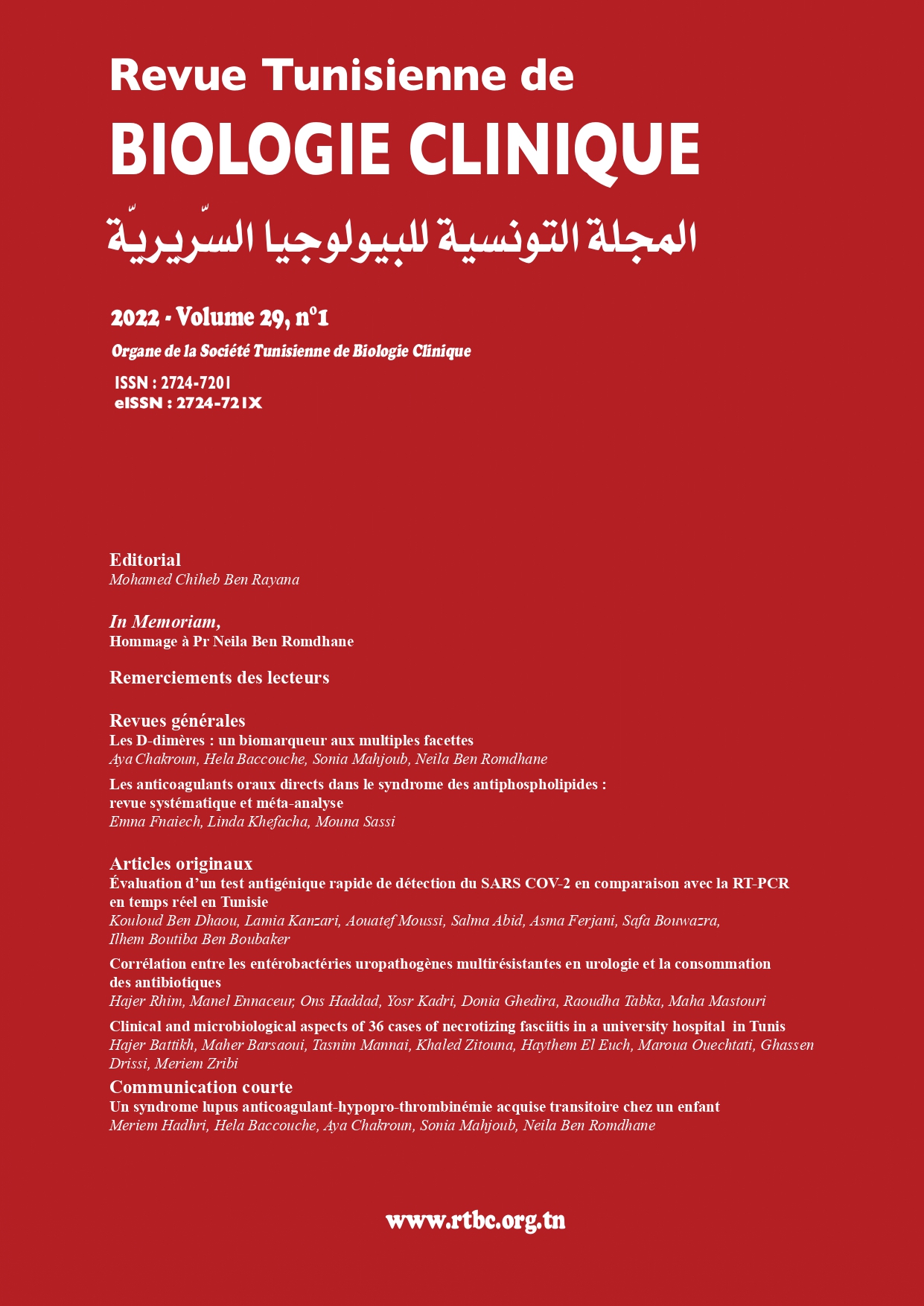Abstract
D-dimers are specific fibrin degradation products. They witness the activation of coagulation and secondary fibrinolysis. D-dimers are increased in many physiological (pregnancy, elderly subjects, etc.) or pathological (venous thrombosis, sepsis, surgery, etc.) clinical settings. For more than two decades, several D-dimer assay kits have been developed with some disparity in terms of analytical performance. However, a problem of standardization of this test persists. The value of D-dimers in the exclusion diagnosis of venous thromboembolic disease (VTE) and in the diagnosis of disseminated intravascular coagulation (DIC) is well established. In addition, the use of D-dimers for estimating the risk of recurrence of deep vein thrombosis is confirmed; however, its role in the decision to continue anticoagulation seems more controversial. Nevertheless, the field of application of D-dimers continues to expand, both for diagnostic and prognostic purposes as well in benign and malignant disorders. Since December 2019, marking the onset of the COVID-19 pandemic era, D-dimers have generated a lot of interest and new applications of this biomarker are supported. We present, here, an update on the analytical aspects and the main fields of application of this biomarker.

This work is licensed under a Creative Commons Attribution 4.0 International License.
Copyright (c) 2022 Revue Tunisienne de BIOLOGIE CLINIQUE

